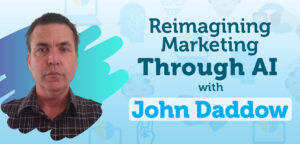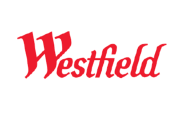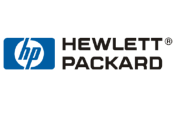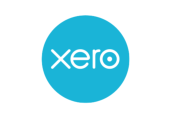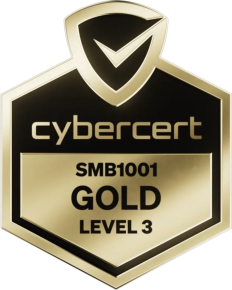
How do you make sure things get done?
As many business owners have, I’ve been in a spot before where you start a project, to find that you get halfway through the project and the psychology of the mind says, “let’s finish the project, but you don’t even really look at why you started it”.
I’ve got Tony Guarnaccia here who is the founder of ResultsClub.org to tell us about a special system he’s got called the Results Loop. Tell me about how you make sure you don’t make the final mistake of feeling like you have to finish something while you might be flogging a dead horse.
Tony: Let me start with the story. Years ago, back then late 1930s. There was an epidemic much like we’re dealing with today. It was a polio epidemic and so it impacted children where they couldn’t walk. Unfortunately, my mother was one of those people. So at the age of just nine months old, she found herself with polio, unable to walk up to the age of 14 years old. So growing up, I asked her, how did you survive? How are you able to eventually walk and wear high heels? But even mentally? How do you get through that?
What I always learned growing up that what I applied to business today is that you have to break things down. That is kind of the impetus behind a lot of what I’m talking about, which is taking small steps. What my mother had to do to be able to walk was that the hospital first had her work with pottery to build up the nervous system and strength. Eventually, they had her swimming, building up more strength to the point where she was then starting to slowly walk.
Three Steps to Success
What I discovered from her and working with some of the best companies in the world, is that three things are necessary to have success.
- Number one, you have to know what steps to take.
- Number two, then you have to know how to take those steps.
- Number three, you have to take the action and take those steps.
So that is the formula I found that I applied to my system called The Results Loop, which we can talk about in a minute.
Resisting the Shiny Object
It’s great to hear that we’ve got the medical ability to put your mum in a position that she is now. So often people make purchases of things, and they go, “oh, that’s great”, but then the next day they go, “what the hell did I do that for?” Myself, I might buy something online and think it sounds like a good idea, but then the next day I realise I may have had too many beers when I bought it. If I was sober I may not have done it quite as quickly. How do you make sure the squeeze is worth the juice?
Tony: I love that saying because that’s something I grew up within the business. I think it comes down to business owners and marketers. They both chase the shiny object. They’re looking at the latest thing without first looking at your overall strategy. Where I always start is with what you want to accomplish. So you start with the end in mind, what’s your end goal, and then you reverse engineer it. Otherwise, the business is going in the wrong direction. It’s something we’ve all done. How many of us have wasted money hiring the wrong people, placing the wrong ads, wasting ads, wasting time, wasting money, we’ve all done it. A lot of times it comes down to the decisions we make. A lot of times we make a quick decision, but it’s not necessarily the right decision.
IT doesn’t have to be expensive. If you’re starting a business and need reliable IT support and services, fill out the form to learn more about $1 IT services.
Not Everyone Should Be Your Customer
As you say we’ve all done that. I know when I started in business doing I.T, I thought everyone could be my customer. So we had residential people, we had businesses, we had local councils, we had all sorts of different people’s schools. I had a look at our marketing spending and what it was bringing in. After that, we cut out schools. we cut out local council and decided 
Finding a Balance
In The Results Loop, let’s say I’m looking to go down a new path and someone told me about this cool strategy. How do you work out that balance between home and business? Or if you’re starting in business completely from scratch, and you’ve done the Boston Tea Party approach and just saying we’re going out on our own, how do you make sure that you focus on the right thing. Sometimes it’s not necessarily the work in the trenches, is it?
Tony: No it isn’t. The good news is, I found that regardless of the company or the stage they’re at, the same six factors apply. Those six factors are:
- The market you’re serving.
- The products and services you’re providing them, which I call offerings.
- Your value.
- Gaining new buyers,
- The loyalty of those buyers
- How to Get Quality Referrals
I’ve been inundated with too many customers before and then had to cut some of them out, but then some of the others have downsized. So how would you make sure that you got results that a referral system, for instance?
Tony: It depends on the size and stage of the company. So if it’s a startup, you want to go around it in terms of starting with your markets and your offerings. So that’s the best place to start if you’re stuck. But if you’re an established company, and you want to scale and get to the next level, it’s always best to start with loyalty, which is getting people to buy more frequently, and getting them to refer you because that’s the lowest cost per acquisition. So that’s the first place to start.
The way I begin with referrals, and you would appreciate this because I know you’re a data guy, is to start with measurement. So you want to see where you are having success today and where you’re not having success today to least come up with some ratios. For instance, what percentage of my customers or give me referrals? How many referrals on average? Do they provide me during the year?
There are all sorts of metrics that you can leverage to create referral systems. You want to take where you’re at today, understand what those numbers are, and what the drivers of those numbers are. Benchmark yourself, and hopefully even benchmark yourself against others. After doing this you can then come up with systems to improve those numbers since systems give you predictability.
If you need assistance with your automation, talk to a dork. Fill out the form below to book a free one-hour consultation.
Great Referral Programs for Companies That Aren’t Sexy Can Exist
I love my numbers and love data. With referrals, I’ve always tried to make they are worth it. With my I.T business Dorks Delivered, our clients usually only contact us when something has gone wrong. I’ve always found that customers when everything’s working well, they love you, but they don’t bring it up in conversation with others unless they someone else expresses it. How do you have some refer a non-sexy professional services product?
Tony: Sadly, that’s what a lot of our businesses are like in B2B, they’re not the sexiest things necessarily. So what do you do? Well, there are a couple of things to look at. One, you can certainly get referrals from your clients or customers, what I always look at is joint venture partners as well. So who is in complementary businesses, and I would think of it in two ways, who come before you, what kind of business creates the problem or the need that you solve? Then who do you create the problem or need for?
So for instance, if you’re a marketing agency, I did this when I started, I focused on web designers because I wasn’t doing websites at the time. I knew they create the problem that I solved. Once you get a website, you probably want to have it optimised. So that’s one place to start, and I like to start there because they have more volume. So you might get one or two from your client base, but if you can leverage joint venture partners like that, there’s a lot more opportunity.
For your clients, I would look at trigger points. So there’s always specific trigger points that drive the opportunity for the referral. One is when you do a good job. So you want to make sure that part of your sales process or your customer support process is to ask for the referral at those different points in time. When people first buy from you, is a very good time to ask as well. But how do you do that? How do you make it easy for them to refer you? That goes back to the fundamental question of why someone would refer you. It’s the same answer as to why they would buy from you, which is value, you have to provide value.
Providing Value
Tony: The way I look at any kind of lead generation is that there’s always an exchange of value. So at the top of the funnel, when someone first comes into your world, you’re exchanging, essentially, their time for your content. They’re not giving you a lead or anything like that. A good example would be a podcast. So someone is exchanging their time about all things B2B marketing, right? Then the next stage is where someone’s going to give you their contact information, otherwise known as a lead. There’s an exchange there, but a lot of times it’s higher value content.
So for instance, I have an assessment, and what they get is they get a score, called the result score, in exchange for me getting some contact information. At the very bottom of the funnel is the exchange of money. Typically, it’s money for a result. So how do you apply this to a referral system?
You want to think about how can your client give you a referral and get value out of it.
What kind of value would someone get? Well, status. So if you have a company that has a lot of statuses, then a lot of people want to give that referral. Or, it might be even helpful for their friend, because I increase their status as well. A lot of times in B2B, I suggest getting what’s known as a referral kit. So it might be a book or something tangible that’s going to help somebody. So I would reframe my mind from not getting a referral. But really, how can I help my client help their friend to reframe your mind.
I’m glad you answered the way that you did because that is something that has been working for us. Ultimately knowledge isn’t something that people should be paying too much for. They should be able to get that knowledge and understand who you are and a podcast is a fantastic way for people to understand who you are.
IT doesn’t have to be expensive. If you’re starting a business and need reliable IT support and services, fill out the form to learn more about $1 IT services.
Consider Gifting a Book
Have you heard of a guy named Bob Berg? I was given his book many years ago and was told read this will change your business. There was a note in the book from who I got it from saying, now that you finish reading this, it’s time that you give someone else the same enjoyment. So I went and bought 30 copies of the book and wrote the same note in the back. I found 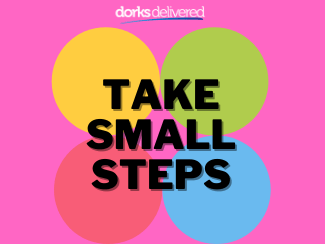
Tony: That is one of the reasons why I have a book coming out for exactly that reason because it’s a great way for someone to refer me. They give the friend a copy of the book. One thing that is important with B2B in particular, is a lot of times your success is relative to how much time someone spends with you. So podcasts are great for that because someone’s listening for 20 minutes. Imagine what it’s like for a book. Someone’s reading your book for two or three hours, they’re getting used to who you are, and building that knows, like, and trust in place.
Remember: Don’t Automate The Personal Touch
As much as I love automation and love data, don’t automate the personal touch. It’s something you should never automate. You’re spending the time to talk to someone, if you’re talking to them, listen to them and truly hear them. You’ve got two ears in one mouth, make sure that you are using them in that proportion and you’ll build a relationship and you’ll grow rather quickly.
So if people have gone through your different growth strategies, and there’s now got their funnel full, where do you come in to be able to help people out? with making sure that your team’s ability to deliver on the results without watering down. How can you make sure that your team stays up to par and that they are doing what they’re meant to be doing?
Tony: I’ve been fortunate to work at many different levels in business. Six, seven-figure businesses, eight and nine-figure businesses, Fortune 500 businesses. The difference is, the smaller companies have no systems or process. As you get to the next level, you start to have things more systematised. So a lot of times if people are not stuck with sales or marketing, it’s an operational problem. That usually comes down to the systems you’ve created, the automation you have, or communication systems.
Standard Operating Procedures Are Vital
I started as a solo guy saying I can do better than where I was working, and I went gangbusters. Then I realised I’m spending a lot of time doing bookkeeping and doing all the administration stuff that I didn’t like. My first contractors became full-time staff members, then one of them sadly had a stroke and had to jump out of the role. It nearly killed the business because we’re both working very hard. That’s when I started heavily investing in standard operating procedures. This documentation made sure that the things that you can’t automate can be followed exactly how you want by the meat in the seat. The same way, as Ray Kroc originally envisioned McDonald’s to have a bunch of 15-year-olds run your business.
Do you need help with backup and recovery? Fill out the form to get in touch with a Dork.
Auditing Your Team
I understand that you do team audits to make sure that people are doing what they’re meant to be doing. Tell me a bit more about how do you know if your team’s doing the right thing to need to have an audit?
Tony: The first thing you want to look at does you have the right people. You want to have the right people on the bus and in the right seats. Where do you start with that? That starts with you, meaning the business owner, or the executives. You need to define your core values, your mission and your purpose, and your big, hairy audacious goals, your vision, those kinds of things. If you have a compelling vision, people will follow you. So you want to make sure that they have the same value system.
In my company, I define six core values that kind of drive who we are, how we hire and the decisions we make. The way I think about it is, do they fit your core values? Do they have the skills necessary? Do they have a kind of attributes? You don’t want to have someone who is very analytical running the sales team, it probably wouldn’t be a good fit. So you want to make sure all that is aligned, and then you can scale your team.
If you’ve got someone setting the team’s energy, you need to make sure you have the people on the bus in the right seats. I like that. I’ve seen in businesses that we’ve worked with where a gun engineer has been put into a managing role to manage engineers and it nearly kills them. They enjoy being on the tools for solving the problems, not solving people problems.
How Results Club Works
Tell me a bit more about ResultsClub.org. Let’s say I’m trying to work out if Tony is the right fit for me, how’s this going to help me out? How does it all work?
Tony: Results Club is a membership, a group coaching membership, where I answer people’s questions on where they’re stuck. What we do is every week is we hit on different topics. So one week, it might be HR, so we bring in an HR professional. What I love are sales and marketing. So that’s what I focus on. You go on the call, and you can ask questions to the expert or me directly, and get unstuck with whatever stage you’re in. It’s also a great place to network with like-minded individuals.
Sounds like there are multiple reasons why you want to be on there. It’s going to be a stepping stone, it’s going to be something that’s going to allow for people to get to that next level.
Tony: Absolutely. One of the frustrations I had, as I’ve grown businesses, is I don’t have the answer to this particular question. I wish I could just call someone and get that answer, whether it’s something technical, or whatever it is., I always wish I had a resource to go to. I thought, well, if it’s not existing out there, why not create it? So that’s really why I created it.
So people can use this as kind of like a soundboard to bounce ideas off of, or pretty much use them as the pseudo Board of Directors without any financial interest which is cool. So the different walks of life people have been in, they could be anything from solicitors, accountants, and anywhere from around the world. How do you work out the collaboration partners?
Tony: So we’ll have meetings where it cross-pollinates where you can ask people that are not in your industry because I believe that’s where the greatest innovation comes from is looking outside your industry. Then we’ll also have different meetings where it will be industry-specific where people can think with other people that do what they do.
One of the best things you can do is go to a conference that has nothing to do with what you’re in and what you’re doing to learn from outside your industry. I went to one on accounting geared towards practices that needed software to manage many, many books. I went along and realised there’s a product here right now I can easily integrate. They’re already paying hundreds and hundreds of dollars a month for their subscriptions and we can integrate this for 50 bucks. But everyone went, oh, this is just how we’ve been doing this. This is how it’s done. It’s just about being there to think about it and using that pencil in the spacecraft instead of the pen upside down to become an innovator. Is there anything else you’d like to go through?
IT doesn’t have to be expensive. If you’re starting a business and need reliable IT support and services, fill out the form to learn more about $1 IT services.
Final Thoughts
Tony: Just to circle back on what we talked about the how and taking action, but just to circle back on the what because that’s the area that’s most often neglected. What I like to do is take people through a plan. So with The Results Loop, I created it in such a way where it’s a planner, it’s a one-page marketing/sales/business plan. We take the time to step back and examine 
I used to be a professional violinist. When I was learning really hard music, my teacher would tell me to slow down to speed up. As a young kid, I just wanted to blow through the hard stuff and just get to the melodies and be lazy. What I learned is, again, small steps, break things down to slow, and that actually will accelerate your growth and so forth. Most people won’t plan though, because they’re afraid to fail. They don’t want to take the time, they don’t know how, but planning is one of the secrets that I found for success.
When you think about planning, if you feel those butterflies in your chest saying you shouldn’t do that, it’s probably the thing you think you should do. If it feels like jumping out of your comfort circle, as much as you hate it, you should do it.
You’ve got a nice deal running for people to jump into The Results Club at a discounted rate at the moment.
Tony: Yeah, you go there and this club, it’s going to be $297 a month. Before we do that, we’re going to have it for a period of $97. But right now to say thank you for having me. Honestly, it’s only $1 for the first two months. So it’s $2 to get two months, which is eight sessions with me and my guests were any question you have and where you’re stuck in your business, I’ll answer it.
How good is that? Two months, $2, it’s less than a cup of coffee. That’s pretty good. Sink your teeth in and it’s very, very low risk, very low entry price and jumps across. I’m going to be jumping across and checking it out. Use the code Business Built Freedom, BBF.
Anyone that has enjoyed this, make sure to check out resultsscore.com or resultsclub.org and see what Tony has got to say and sign up, see what you get out of it.
[module-379]






